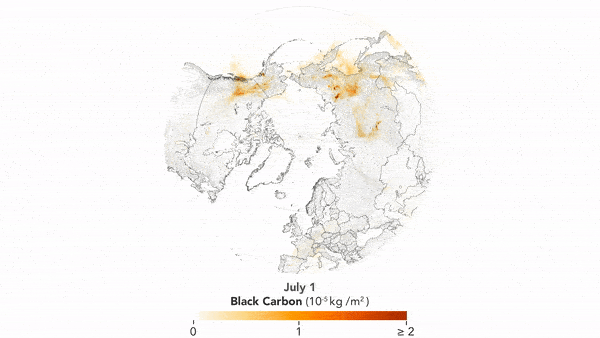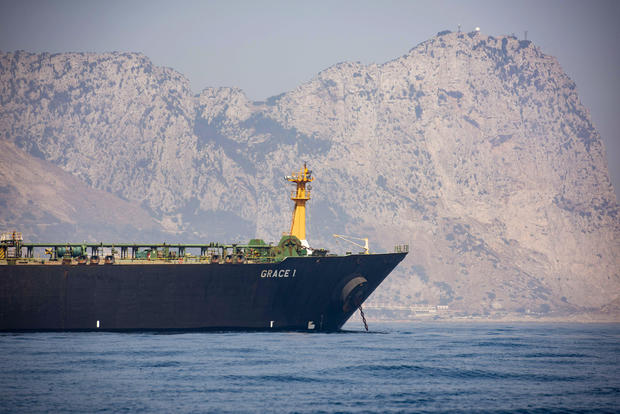Smoke billows from a fire outside Ljusdal, Sweden in July, 2018. Sweden is fighting its most serious wildfires in decades, including blazes above the Arctic Circle, prompting the government to seek help from the military, hundreds of volunteers and other European nations.
Maja Suslin | TT | AP
Smoke from massive fires in the Arctic has blanketed nearby cities and could travel thousands of kilometers to other parts of the world, raising concerns among scientists about poor air quality and exacerbated global warming.
The ongoing Arctic fires this year have been particularly severe in Siberia and Alaska. In Russia, flames engulfed more than 7 million acres in Siberia and beyond in August, forcing President Vladimir Putin to send military transport planes and helicopters across the country to put out the fires.
In Alaska, more than 2.4 million acres have burned over the past three months, inundating nearby cities with smoke and forcing temporary hospitals to open for clean air access.
Now, a cloud of smoke and soot bigger than the European Union is moving from Siberia into the Arctic, according to the World Meteorological Organization. It is forecast to reach Alaska, where fires have scorched an area larger than the wildfire damage in California last year.
Scientists say the smoke plumes, filled with megatons of tiny, harmful particles, could travel to other areas of the world and cause serious respiratory problems for people.
“What happens in the Arctic doesn’t stay in the Arctic,” said Liz Hoy, a researcher at NASA’s space flight center, which has tracked the blazes from satellites.
“This year, it’s an incredible amount of burning, and the smoke affects air quality thousands of miles away from the Arctic region. The warming there will translate to the East Coast [of the U.S.], contribute to sea level rise and affect people all over.”
The fires in northern Russia, Alaska, Greenland and Canada released a record 50 megatons of CO2 in June — equivalent to Sweden’s total annual emissions and more than the past eight Junes combined — and 79 megatons in July, according to NASA.
Preliminary data also shows that July 2019, the hottest month on record, has also registered the highest CO2 in the last 10 years.

In Russia, NASA satellite imagery shows a thick smoke plume from fires that extends across more than 4.5 million square kilometers of central and northern Asia, blocking sunlight and impacting air quality.
“People ask, how do wildfires in Alaska and Siberia impact me back in Seattle or Minneapolis? The immediate concern is the transport of smoke, which travels thousands of miles,” said Brian Brettschneider, a climatologist at the University of Alaska Fairbanks.
“That affects people far removed from where these fires are. It affects air travel, and the carbon emissions from fires burning negatively impacts everyone.”
Nearly 400 fires have burned in Alaska so far in 2019, forcing residents in Fairbanks to open up hospitals for clean air, and lock themselves in their homes during the hot summer months.
“In Fairbanks, we had smoke thick enough to substantially reduce visibility for 25 days. That’s a lot of smoke. Some of the worst days were pretty choking,” said Rick Tolman, a researcher who lives in Fairbanks.
“It’s a big concern for people with existing respiratory issues,” he continued. “The smoke from these fires travels so far and can produce significant air quality problems in areas far from the fires. With the intensity of the fires increasing, it’s wreaking havoc.”
Smoke and soot from the wildfires also absorbs solar energy, further warming the earth. The Arctic is warming at more than twice the rate of the rest of the world. In August, for instance, record ice melt in Greenland over one day irreversibly raised sea levels by 0.1 millimeters across the world.
Mark Parrington, a scientist in the Copernicus Atmosphere Monitoring Service, said that higher than usual temperatures and dry soil has made great conditions for unusually intense, hot blazes. The latitude, intensity and duration of the fires have set them apart from what is typically observed in the region.
“The fires burn for so long. Over the last two months, it’s unusual to see this scale. Generally, fires in Alaska last for a few days to two weeks. But this is now two months of burning,” Parrington said.
The worst fires move north of forests and impact Arctic tundra and permafrost layers, which accumulate organic matter over thousands of years, Parrington said. When those areas are burned, it releases thousands of years worth of carbon and methane into the atmosphere.
“From a climate point of view, these fires are exponentially worse,” Brettschneider said.
Besides health and environmental concerns, there’s an economic toll too.
The higher frequency of fires, and exponential warming in the Arctic, will contribute to sea level rise, which threatens to destroy property value in coastal regions, displace residents and impact global markets.
In Alaska this year, over $150 million was spent on suppression and protection efforts against wildfires burning closer to populated areas, according to researchers.
Typically resources are not used to combat wildfires, since they are a natural part of the boreal ecosystem. However, this year’s unprecedented wildfire season has changed that, as fires burn hotter, more frequently, and deeper into the ground, destroying trees and their ability to reproduce.
“It is important to understand that fires aren’t only a result of climate change, but also are impacting climate change,” said Anton Beneslavsky, a Greenpeace Russia activist.
“If we talk about mitigating climate change, we need to urgently pay attention to the wildfire issue,” he said.

